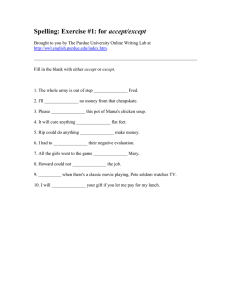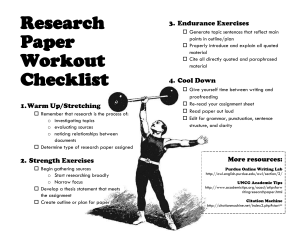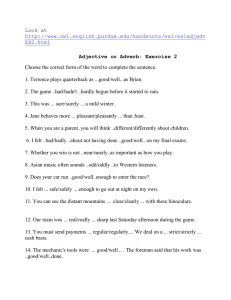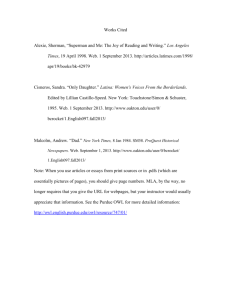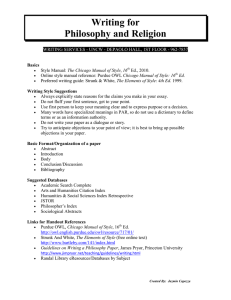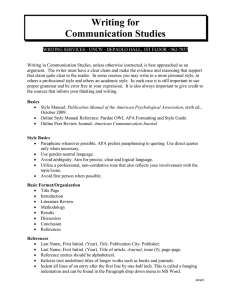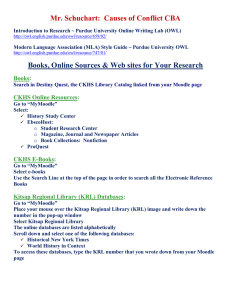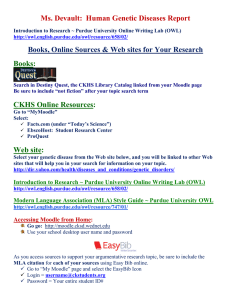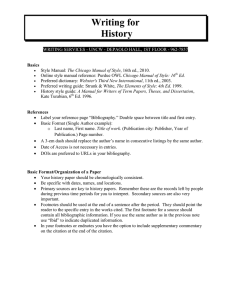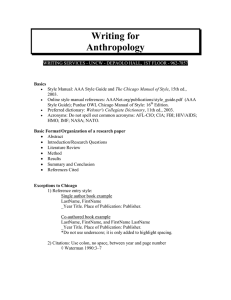Presented by Etta Barksdale ISPE Automation Forum December 8, 2009
advertisement
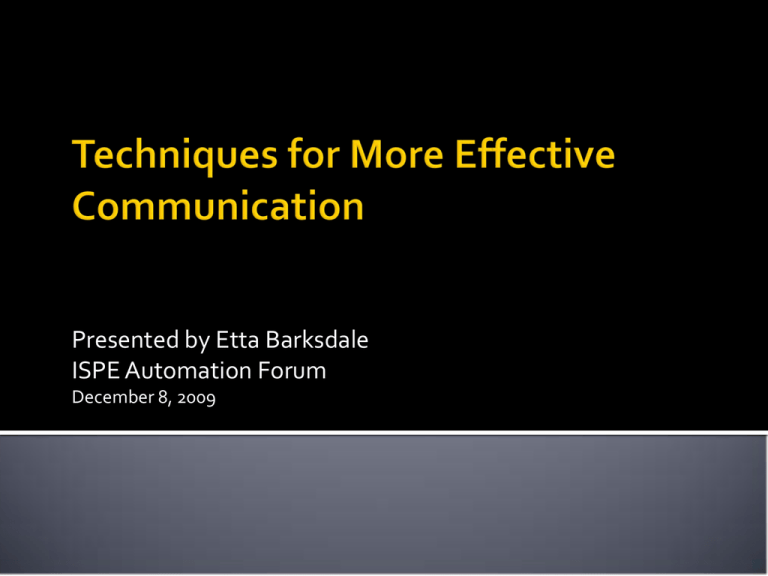
Presented by Etta Barksdale ISPE Automation Forum December 8, 2009 The Truth about How People Read at Work Audience Purpose Techniques to Enhance Comprehension They don’t. They skim, scan, and skip. Workplace document = tool to get work done Determining Audience’s Needs What hat does your audience wear? Expert Technician Manager Where does your audience work? “…Write with a specific person in mind. When writing Berkshire Hathaway’s annual report, I pretend that I’m talking to my sisters. ” A Plain English Handbook How to create clear SEC disclosure documents By the Office of Investor Education and Assistance U.S. Securities and Exchange Commission August 1998 What are their responsibilities? What do they have to know? What can you leave out? Will they understand your jargon? What questions will they have? What is their reading environment? Adapted from : Anderson, Paul V. Technical Communication: A Reader-Centered Approach. 6th ed. Boston: Thomson-Wadsworth, 2007. Brizee, H. Allen and Kety A. Schmaling. “Audience Analysis: The Development Stage.” The Writing Lab & The OWL at Purdue University, 1995-2009. Accessed from <http://owl.english.purdue.edu/owl/resource/629/02>. Inform Instruct Persuade Formatting – Focus attention Writing – Reduce ambiguity & increase clarity Formatting: Focus Readers’ Attention Use bullets or numbers Include white space Group similar information (chunking) Use graphic enhancements – ALL CAPS, bold Consider appropriate typeface Serif = print Times New Roman, Garamond, Georgia Sans Serif = electronic Arial, Verdana, Corbel Writing: Reduce Ambiguity & Noise Begin with big picture Use terms consistently Be specific Avoid “not” Use terms readers understand Consider audience’s needs Understand your purpose Use techniques to aid comprehension
